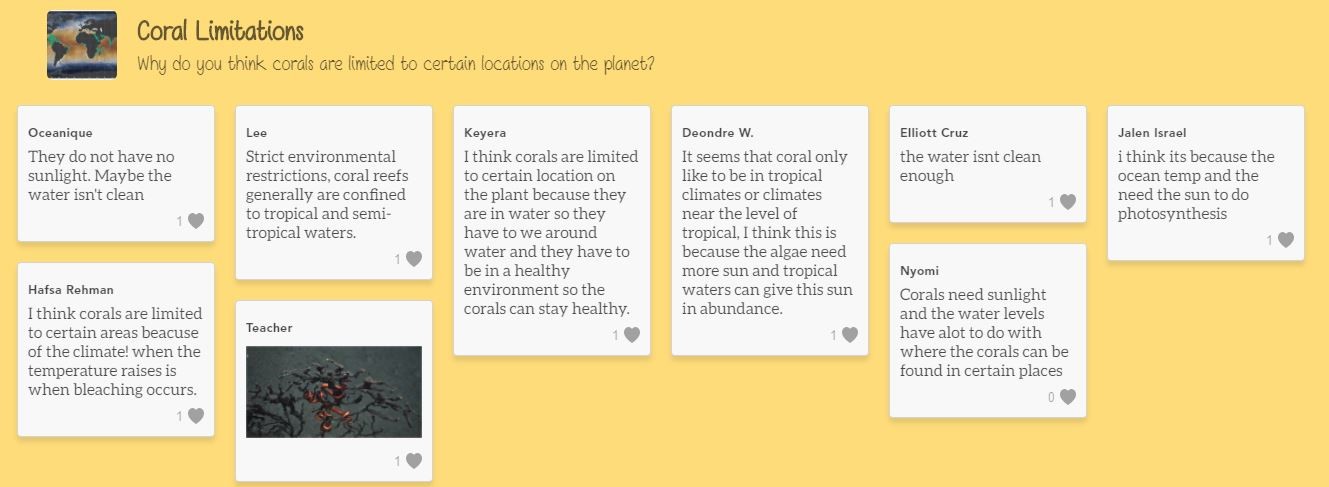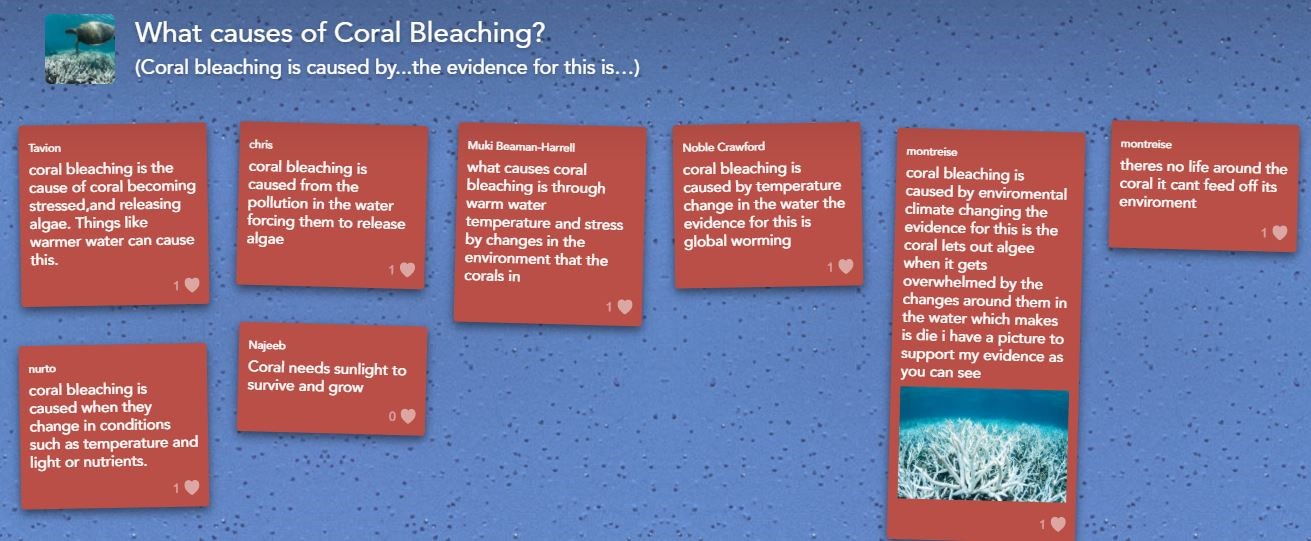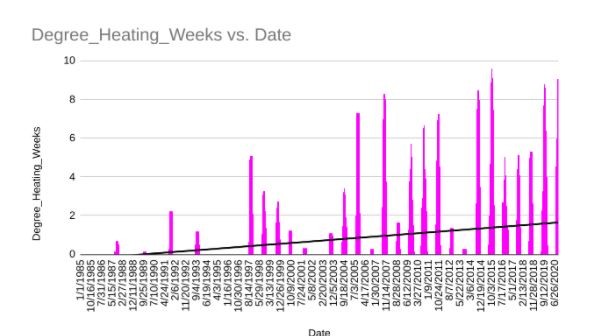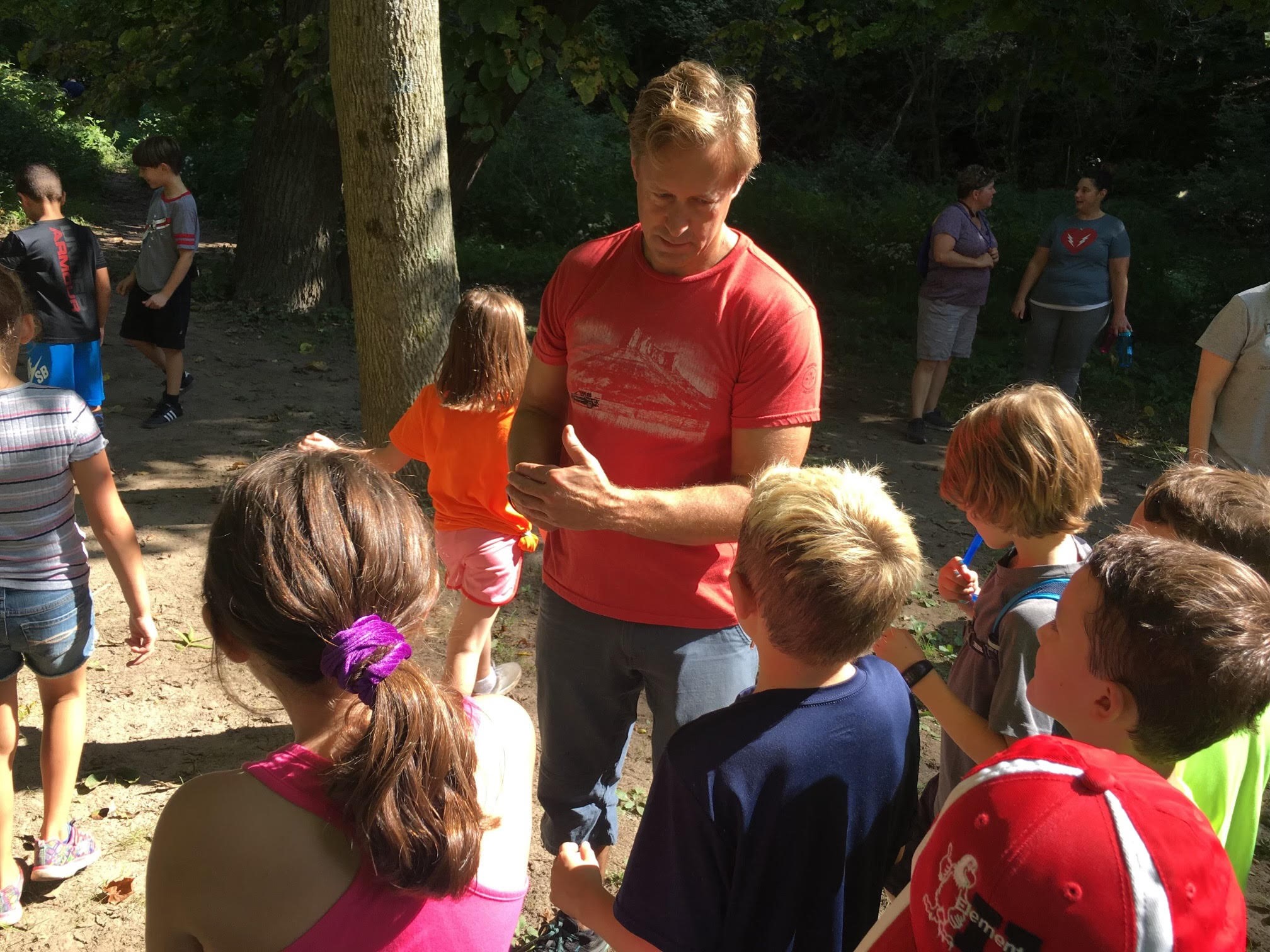Next Gen Navigator
Successful Sensemaking and Data Exploration at a Distance
By Daniel Sullivan
Posted on 2020-12-17
Disclaimer: The views expressed in this blog post are those of the author(s) and do not necessarily reflect the official position of the National Science Teaching Association (NSTA).
I’ve been teaching science for more than 20 years. In March 2020, my entire school district began distance learning as COVID-19 continued to rapidly spread across the nation. After much trial and even more error over the spring, I contemplated during the summer how to best engage my students remotely, particularly my Environmental Science class. Why Environmental Science? The human impact on the Earth, in my opinion, is the biggest problem we face as a global society, and the future generations, our students, will bear the brunt of past actions and be future solution-finders.
I soon realized I had to change my game! Over the years I’ve practiced teaching from an inquiry standpoint, facilitating students in exploring concepts and ideas through lab experiments. By making claims from evidence they gathered, students share what they discover and inductively make connections with the science content I’ve targeted. It’s messy, fun, and challenging as a teacher, and rewarding for students.
Once distance learning became the mode, I wanted to somehow continue in an inquiry vein. Fortunately, NSTA provided an amazing teacher educational opportunity to explore sensemaking, sometimes referred to as “Inquiry 2.0.” During the workshop, our skilled instructors used amazingly appealing digital tools to engage us in science and engineering practices to explain the phenomena they presented to us. Additionally, we—as the students—shared ideas with one another and supported our claims with evidence to build consensus, answering questions like these: “What do we agree about?” “Where should we go next to help us with areas in which we disagree?” This approach inspired me greatly, and I realized that distance learning can be an incredible opportunity for students to engage with scientific exploration at a whole new level.
To test it, I created a unit to explore the causes, effects, and possible solutions to coral bleaching using sensemaking as the unit’s unifying theme. Initially we “took a dive” via videos to observe coral before and after bleaching events. Students individually recorded observations, made inferences, and noted questions they had after experiencing the phenomenon through the video.
Then I asked the class, “What did you see?” and “What do you think happened? How do you know?” I cautioned them to be careful not to reveal their answers (a science teacher cardinal rule!). I wanted my students to build their conceptual structure by consensus, using evidence to support their claims, and discuss contrasting ideas (argue from evidence).
I then asked them to create, on paper or with other drawing tools (they could use the drawing function in Google Docs, which is free and requires no login), a model to explain why coral is becoming bleached based on our current evidence (observations). The keyword is current, as the students continually modified their models throughout the unit as they built their ever-shifting conceptual frames.
We then investigated sea surface temperature maps, ocean depths, and coral reef habitats and ranges using NASA satellite data. Students then shared observations and were asked, “Do you see any pattern emerging from your observations?” Synchronously, we discussed using digital share boards in Nearpod and had open discussions to share claims with support of evidence, always creating some form of consensus about the bleaching phenomena.


I used talk moves such as these: “So, if I heard you correctly, …?” “How does this fit with the current idea?” “Okay, this idea does not seem to fit with our current agreement, so is there other evidence to support this counter-claim?” To facilitate consensus, I used their discussion board answers and summarized what I understood as common themes after the lesson.
During the next synchronous lesson, I showed the students what I viewed as their common ideas regarding the relationship among ocean depth, sea surface temperature, and coral locations. I then asked if students had anything that they didn’t agree with or wanted to modify. This led to more small modifications and an agreement by the class that this was the best explanation thus far.
These discussions led to multiple “big” questions that students wanted to investigate, such as “Does climate change cause corals to bleach? If so…how?” “How does water temperature impact coral reef bleaching?” “How does ocean acidification impact corals?” “What is the mechanism of bleaching/How does bleaching occur at the coral level?”
To conclude the unit, students—either with a partner or individually—designed investigations to analyze data to serve as the basis of evidence (as part of revising models? Explaining the phenomenon?) using Coral Reef Station Data (National Oceanic and Atmospheric Administration) from Hawaii, Galapagos, Fiji, the Great Barrier Reef, Palau, and the Florida Keys. This asynchronous assignment followed a standard lab report format. Lastly, the students shared their findings with the class on Zoom, and we had a discussion about the impact of climate change on coral reef populations worldwide.

The students’ investigations continue as they research climate change phenomena and solutions to vastly complex problems of human impact. Through all this, I realized that we were still able to gather evidence to explain our phenomenon. Through amazing simulations and real long-term data sets and by using digital tools that I found, we didn’t have to rely on experimentation in our lab setting to collect data!
I am thoroughly convinced of the value of providing students new pathways to explore and discover real problems via distance learning and the use of digital resources. Engaging in sensemaking to build a consensus explanation of a phenomenon, even at a distance, creates a learning environment that promotes respect, equity, and curiosity, an environment in which students are excited to discover and share their ideas. More importantly, in a class that promotes empathy and awareness about the world around them, students have the opportunity to discover their value system while being asked to be stewards of the Earth.
What are other sources of real data you’ve shared with your students to create opportunities to engage in analyzing and interpreting data, developing and using models, and/or constructing explanations?

Daniel Sullivan says, “It was a very convoluted path that led me to teaching!” After graduating high school, he served in the U.S. Navy for several years. He then attended Monroe Community College in Rochester, New York, and Cornell University in Ithaca and earned a bachelor of science degree in Natural Resources. Soon after that, Sullivan served in the Peace Corps and completed his masters degree at Roberts Wesleyan College in Rochester. He then taught science at East High School in Rochester for 15 years and is presently teaching at School Without Walls in Rochester.
Sullivan loves teaching, traveling by backpack to remote places of the world, playing drums, culture, and music. E-mail him at dsullivan444@gmail.com, or visit his Instagram page at https://www.instagram.com/7sealion/.
Note: This article is featured in the November/December 2020 issue of Next Gen Navigator, a monthly e-newsletter from NSTA delivering information, insights, resources, and professional learning opportunities for science educators by science educators on the Next Generation Science Standards and three-dimensional instruction. Click here to sign up to receive the Navigator every month.
The mission of NSTA is to promote excellence and innovation in science teaching and learning for all.
NGSS Professional Learning old Teacher Preparation Teaching Strategies High School


